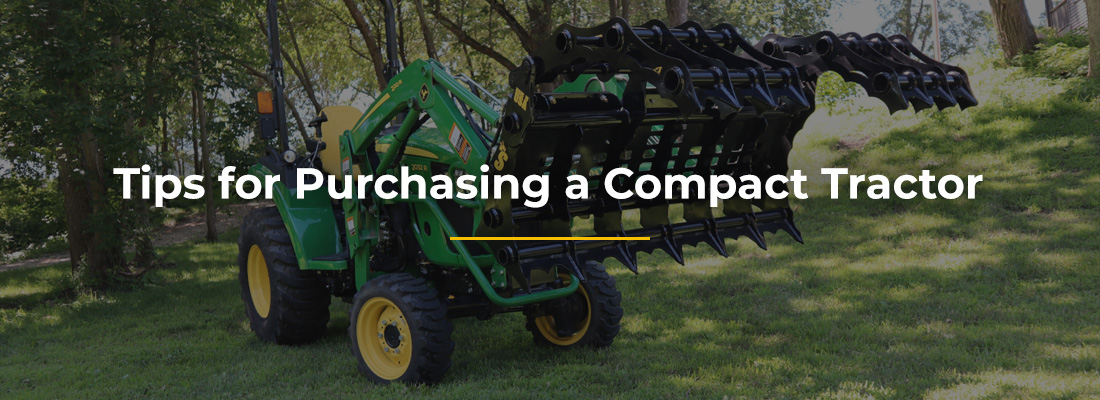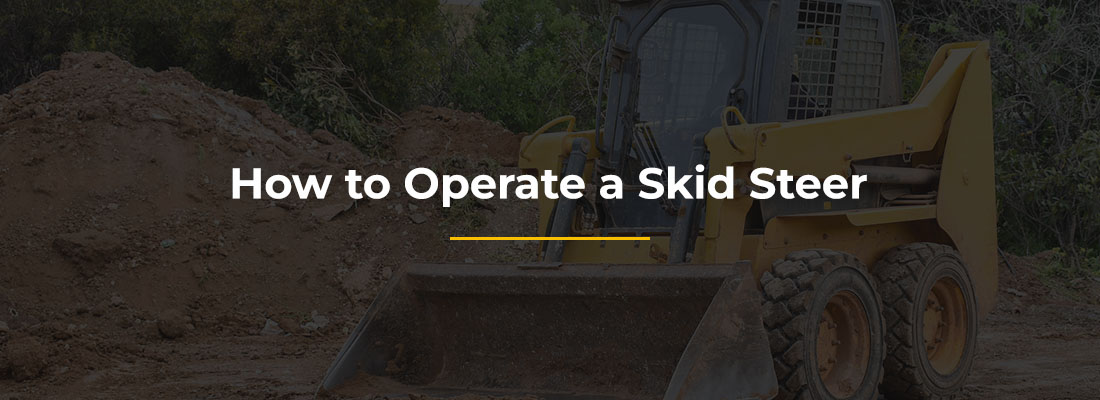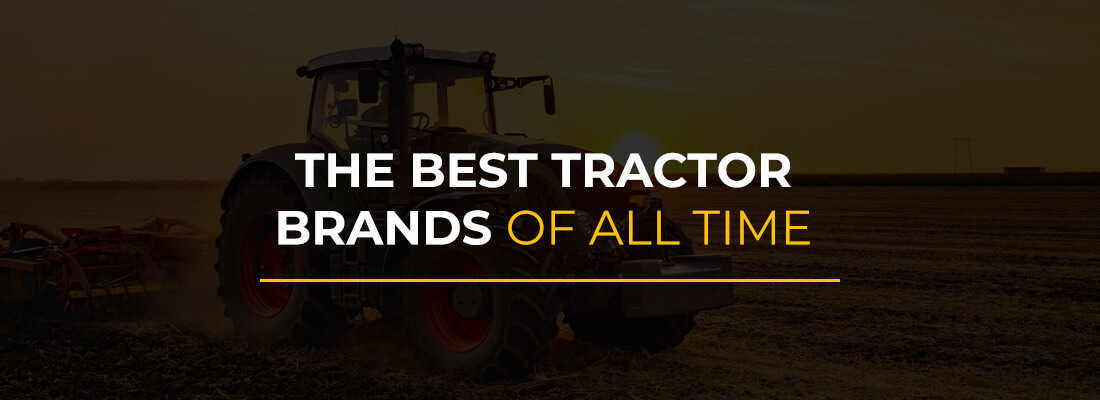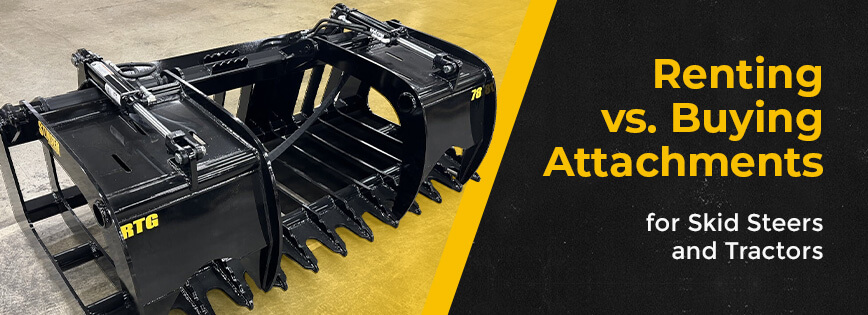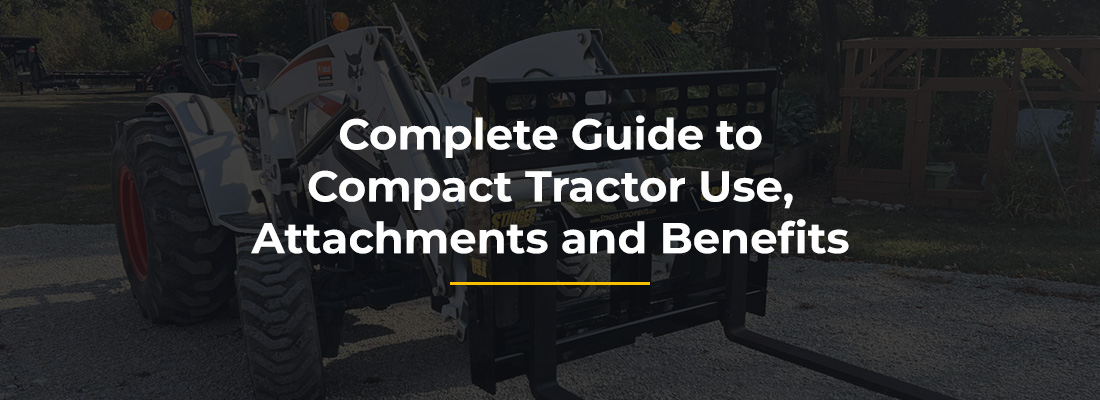
Are you considering getting a skid steer or expanding your skid steer attachments with a land leveler? Skid steers are incredibly valuable partly because they’re so versatile. Compact and powerful, these machines can lift, plow, rake, carry material and much more.
Choosing the right skid steer attachments can be overwhelming because there are so many options to choose from. Each attachment has its strengths and weaknesses, and some work well in multiple applications. The best attachment for you will depend on your specific goals and what you plan to do with it.
If you’re interested in purchasing a land leveler attachment, you probably have some questions. Luckily, we’re here to equip you with the information you need to make the best purchase decision for your property or business. Keep reading to learn more about what skid steer land levelers do and how to tell if they’re the best attachment for you.
Parts of Skid Steer Leveling Attachments
It’s important to note that not all skid steer land levelers are exactly the same. They’re all designed to create a smooth surface, but some of them have additional elements so that they’re slightly more versatile. Four common elements are:
- Front blade: All skid steers have a front blade which can be adjusted at different heights off the ground. When you want to level a surface at a particular height, this is the primary part of a land leveler you’ll need to adjust. This blade can cut through dirt or push gravel so that the surface you’re working on becomes smooth.
- Back blade: Some land levelers also have a back blade so you can continue smoothing while moving your skid steer in reverse. However, not all skid steers have blades that face both ways — if your land leveler attachment only has a forward-facing blade, you’ll need to turn your machine and only smooth the ground moving forward.
- Scarifiers or tines: Some land levelers have hydraulic-controlled scarifiers, or tines which dig into the ground like a rake or tiller. Scarifiers help to redistribute the soil or gravel you’re reworking so you have a smooth, compact finish when you’re done. Not all scarifiers are hydraulic — on some attachments, you have to manually adjust the height of the tines.
- Floaters: Some land levelers use wheels to hold them up above the ground. These wheels are usually added on the side of the leveler that’s farthest away from your skid steer, and they help the attachment “float” above the ground. However, not everyone likes the feel of using floaters, so some people choose not to use them.
In addition to having different parts, land levelers also have several different names. You may hear them called a skid steer ground leveler or, frequently, a land plane. If you’re familiar with carpentry, the term “land plane” is similar to the concept of a wood plane that creates a smooth surface.
How Do Skid Steer Land Planes Work?
The wide front blade on a land plane creates a level surface by pushing dirt or gravel out of the way. Excess material is either pushed ahead or up over the land plane, where it can freely flow up and over in a controlled amount.
Although you might not always notice a massive visual difference, you’ll definitely notice a physical one when you drive a car over the newly leveled ground. Land planes can help you fill out potholes and smooth out bumps so the finished area is much easier to drive and walk over.
Because they have an open design, land planes allow material to flow freely over and through them. This makes it easy to level areas of dirt or gravel without leaving a pile of debris when you stop the machine. If your skid steer land plane has multiple blades facing the same way, the end result will be even smoother.
What Are Skid Steer Dirt Levelers Used For?

Skid steer levelers are mainly used for grading and smoothing driveways and roads that are made of dirt or gravel. Out of all the attachments you can get for your skid steer, they’re the best choice for completing this kind of work quickly and efficiently.
With the scarifiers on your land plane, you can also successfully break up compacted dirt around potholes and fill them in again so the road is smooth. People who use land planes to regrade roads usually work one side at a time so they can achieve a good crown in the middle. The more water the road sheds, the fewer potholes you’ll have to deal with.
You can also use skid steer levelers for other important tasks, such as grading, raking and leveling land. Here’s a quick summary of the tasks that skid steer levelers are good for:
- Grading driveways and roads
- Smoothing dirt and gravel
- Raking and leveling land
- Filling in gravel and dirt potholes
Because land levelers are designed to smooth out a final surface, they’re not ideal for moving large amounts of dirt or gravel. Many people use them in combination with a bucket to spread new gravel.
How to Use a Skid Steer Leveler Attachment
Leveling a surface before you add gravel is the best way to ensure the gravel ends up smooth and easy to drive over. Here’s a suggested progression for how you can use a skid steer leveler attachment when working with gravel:
- Start by using your leveler to rake and smooth the existing surface. Go back over it until you’re happy with the look and feel.
- Switch attachments and use a basket or box blade to distribute gravel across the space.
- Reattach your leveler and smooth the surface a second time, working to get the gravel as evenly spread out as possible.
Even with multiple passes, smoothing and adding new gravel to a driveway should only take a few hours. Of course, it does depend on the size of the area you’re working with! You’ll probably find that loading and unloading your equipment takes the biggest chunk of time, while the time actually spent grading goes by quickly.
The best way to learn how to use a skid steer leveler is to practice. Watching other people use the equipment will only tell you so much. Once you’re actually in the cab manning the leveler, you’ll start to get a good feel for when you’re happy with the job.
Maintenance and Storage Tips for Skid Steer Land Planes
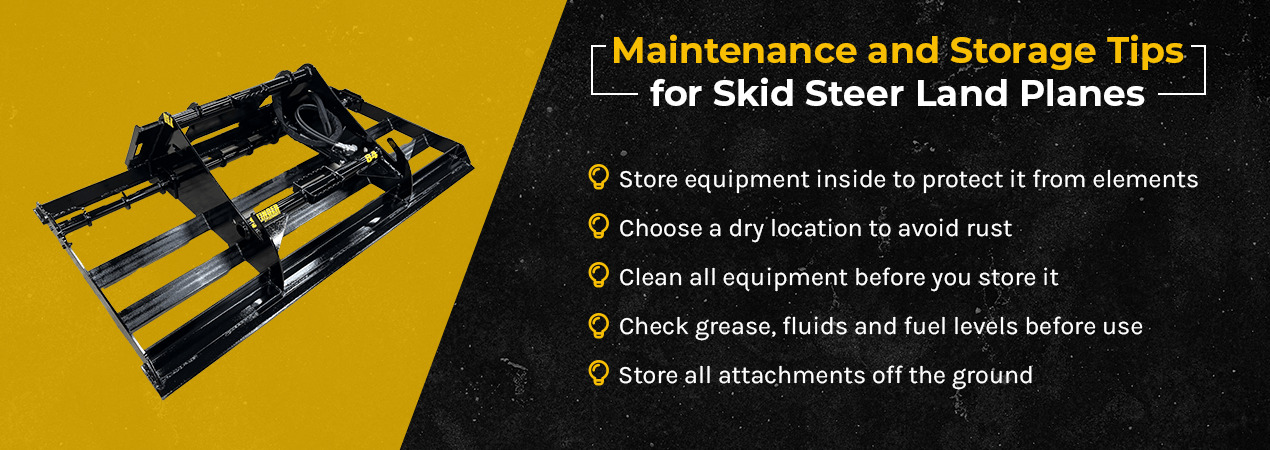
When you take good care of your equipment, it will last longer, work more efficiently and be ready for resale if you choose to replace it. Here are a few general guidelines you can follow when storing a skid steer or any of its attachments:
- Protect it from the elements inside a building
- Choose a dry location to avoid rust
- Clean all equipment before you store it
- Check grease, fluids and fuel levels before use
- Store all attachments off the ground
Depending on how often you use your skid steer, land leveler and other attachments, the best maintenance tips may vary. As a general rule, the more you use a piece of equipment, the more time you should invest in its care. However, you don’t need to clean off equipment after every use if you’re using it on a daily basis.
The more time you spend using a land leveler and other skid steer attachments, the more you’ll get to know your equipment and understand what it needs to perform at its best. Of course, seasonal changes will also impact ideal maintenance and storage — in the winter, you need to be especially careful to clean off salt and prevent rust.
How to Choose a Land Plane for Your Skid Steer
Because there are so many different options for land levelers, choosing the right one for you might feel overwhelming. Below are several helpful tips to simplify this process so that you end up with a piece of equipment you love using.
How to Choose the Right Size
Land planes come in different widths, and the best size for you depends on what you plan to use your land plane for. For example, many people use this attachment to level narrow driveways. In that case, you’ll want a land plane that’s narrow enough to maneuver in small spaces.
If you’re intending to work in wide-open areas like fields and roads that run through fields, you can probably invest in a wider land plane. When leveling roads, most people do one side at a time to ensure the grading will shed water properly, so you don’t need a plane that will cover an entire road at once.
However, choosing a wider plane could make your job easier in cases where you’re working over a large area. With a wider plane, you might be able to reduce the number of passes you need to get a level surface, saving you time. Think about your goals and choose the width that best suits your projects.
Will It Pair With Your Skid Steer?
Many different companies design and sell skid steers. A few notable brands include Bobcat, John Deere and Kubota. Although their equipment configurations are all a little different, most of them are universally designed to couple with the same size and type of attachments.
This means you usually don’t have to worry about whether an attachment will fit your specific brand of skid steer. If it’s a well-known brand, all skid steer attachments you purchase should couple seamlessly with your machine. This means you can shop around and find the best quality and price.
Of course, if you want to double-check whether an attachment will fit your skid steer, you can always reach out and ask about the specific attachment you’re interested in. Most equipment companies work very hard to offer stellar customer service and are happy to answer your questions.
Mechanical vs. Hydraulic Attachments
While fitting an attachment shouldn’t be an issue, you may run into some difficulties with mechanics. Some skid steer attachments are simply mechanical, meaning they don’t have multiple moving parts. For example, a bucket doesn’t need additional controls to function.
However, skid steer attachments with multiple moving parts need to connect with a hydraulic cylinder to be fully operational. Examples of hydraulic attachments include augers, stump grinders and mulchers. Not every skid steer offers the same amount of hydraulic power, so you’ll need to check this number before making a purchase.
If the scarifiers on a land leveler are manually operated, the attachment is considered mechanical and you don’t need to worry about it. However, you should check the required power level for land levelers with hydraulically controlled scarifiers.
Material and Outer Coating
Typically, heavy skid steer attachments are made of thicker steel and will last longer. Although they might cost more to purchase and ship, high-quality attachments are worth it over the long run. They also have a higher resale value, since they’ll stay in good condition for more work hours.
If you live in an area with heavy rain or snow, you should also consider getting a special outer coating on your skid steer attachments. Many attachments are powder-coated, ensuring they can be used in wet conditions and hosed off without fear of rust. Although you can apply rust-inhibiting coatings yourself, they’re more work and not as effective.
Benefits of a Land Leveler for Skid Steers
There are many incredible attachments you can purchase for your skid steer, so why would you choose a land leveler? Some people successfully use other types of attachments to complete similar leveling projects. However, land levelers stand out for their extremely smooth finish on driveways and roads.
If you’ve been on the fence about investing in a land leveler, consider these comparisons with other attachments that do similar work.
Land Plane vs. Box Blade
A box blade is the most similar skid steer attachment to a land plane. They’re used for similar jobs like grading and leveling driveways and lawns. Like the design of a land plane, box blades include a front or back blade and scarifiers. However, the shape of this attachment is very different. Instead of a low, flat profile, box blades are built with a tall box shape that catches and moves large amounts of material.
These attachments are better suited for moving large amounts of material around. By contrast, the design of land levelers allows material to flow freely up and over the blade, redistributing it evenly across the ground. You can get a level surface with a box blade, but it’s easier with a land plane.
Land Plane vs. Bucket
Buckets are another attachment that many people use for grading and leveling. These are pretty standard attachments and have many great uses. Here are just a few of the things that you can do with a bucket:
- Carry and dump
- Cut and grade
- Level and smooth
Although buckets are incredibly versatile, they’re designed primarily for carrying, dumping and cutting. While they can smooth surfaces, you’ll notice a big difference between buckets and land levelers when you’re driving over surfaces they’ve finished. It’s also much easier to set a crown on a road with a leveler rather than a bucket.
Land levelers are much better at getting precise, even finishes. However, they’re not optimal for moving large amounts of gravel and dirt around. Because of their respective strengths and weaknesses, most people use buckets and levelers together to complete high-quality projects.
Land Plane vs. Power Rake
If you’re a farmer, you may be tempted to use a power rake instead of a land plane for leveling and finishing projects. Power rakes are designed to till soil and are ideal for seed prep because they dig up rocks and roots for easy removal.
There are some similarities between land planes and power rakes because they both rake through the soil and create a finished surface that’s smoother than before. However, the power rake’s primary purpose is to till up the soil, whereas a land plane’s primary design is to create an even surface on the ground.
Although both attachments do similar work, they specialize in the opposite areas. You can attempt to smooth with a power rake, but it won’t create the same professional finish as a land plane.
Find High-Quality Skid Steer Levelers at Stinger Attachments
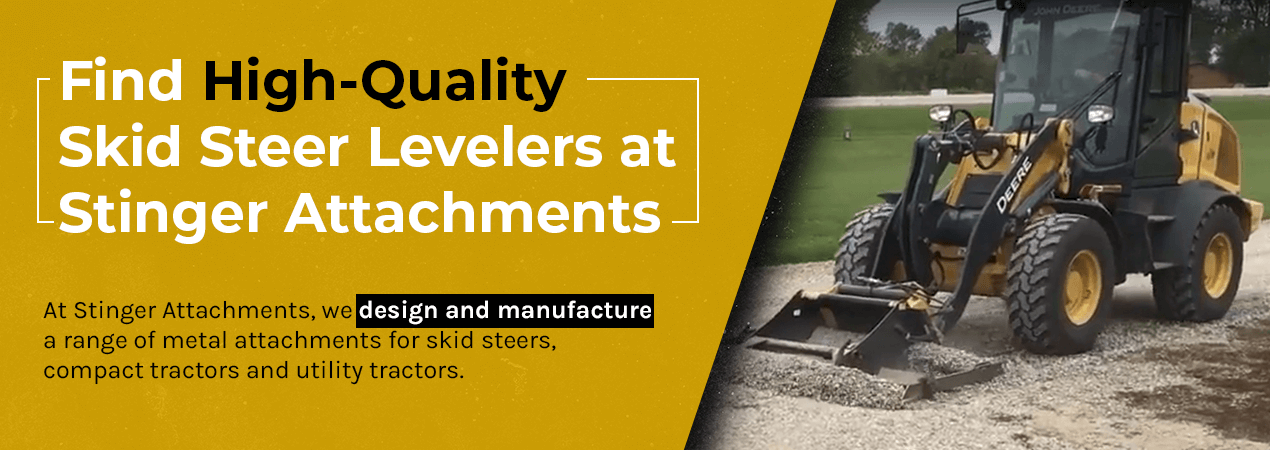
At Stinger Attachments, we design and manufacture a range of metal attachments for skid steers, compact tractors and utility tractors. Our aim as a company is to make you a satisfied customer. All of our equipment is produced to high manufacturing standards with a high turn-around time. You can view all of our pricing online and our products are designed to last — so you can get more work done in less time. Check out our attachments for construction and landscaping.

